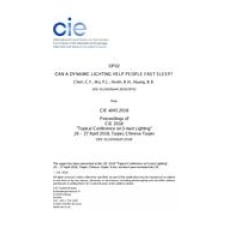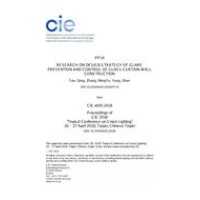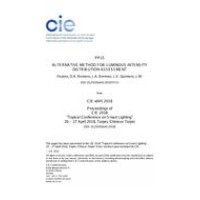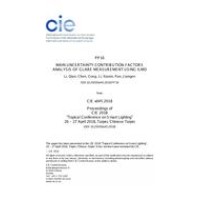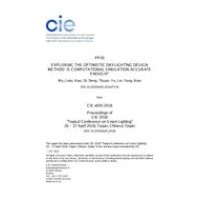AN ADAPTIVE DISPLAY DIMMING CURVE FOR ENHANCED WORK PERFORMANCE AND VISUAL COMFORT (OP14, 73-83)
- Secure PDF Files
- Conference Proceeding by Commission Internationale de L'Ecl
- Category: CIE
$21.20
$11.00
This experiment was carried out in an aircraft cab. Six high-power LED floodlights were used to produce five different ambient lighting conditions. The observers completed visual tasks on a display, which was set at five different luminance levels under each ambient lighting condition. Thus, each observer completed the visual tasks under 25 combinations (filter out 2 conditions) of display luminance and ambient lighting conditions, with five in each trial, with a goal to avoid the visual fatigue caused by the long experiment. For each combination, the observer performed the work performance test, visual fatigue test, and a questionnaire to rate the level of visual fatigue and visual comfort. Electro-oculogram (EOG) data was collected throughout the experiment, the Critical Fusion Frequency (CFF) test and the Near Point Accommodation (NPA) test was performed before starting the visual task to evaluate the level of visual fatigue. The observers were asked to read the Ann Fermo J correction table. The hit rate, the false alarm rate, and the duration of the reading were recorded. When the observers completed the task, the CFF and NPA was carried out again. The difference of them before and after the visual task and characterize the visual fatigue. At the end, the observers completed a questionnaire to rate their level of fatigue and visual comfort. Primary Component Analysis (PCA) was employed to evaluate the visual fatigue between four methods. According to the pilot questionnaire to determine the weight of performance, visual fatigue and visual comfort. As a conclusion the dimming curve was derived to illustrate the Optotype luminance level of the display under each ambient lighting condition.
 PDF
PDF
All of our standards document are available in PDF (Portable Document Format), an electronic, downloadable format.You will be able to download the file in your account downloads.
 Multi-User Access
Multi-User Access
After purchasing, you have the ability to assign each license to a specific user.
 Printable
Printable
At any time, you are permitted to make printed copies for your and your members' reference use.

